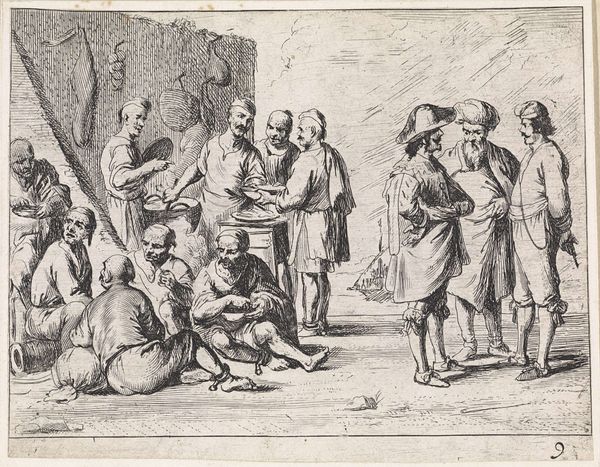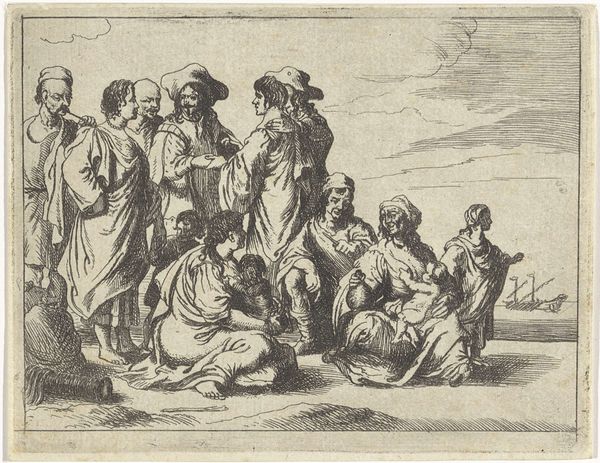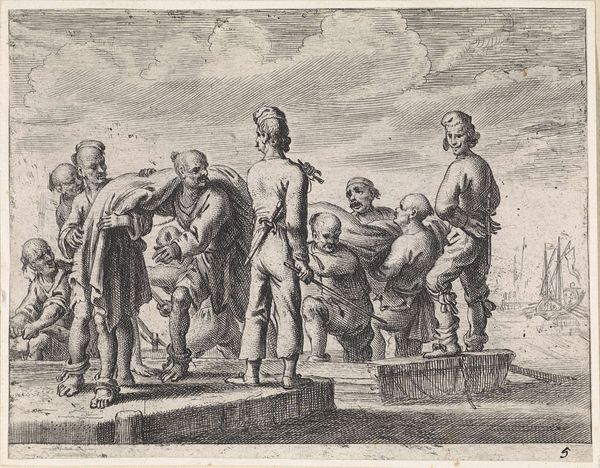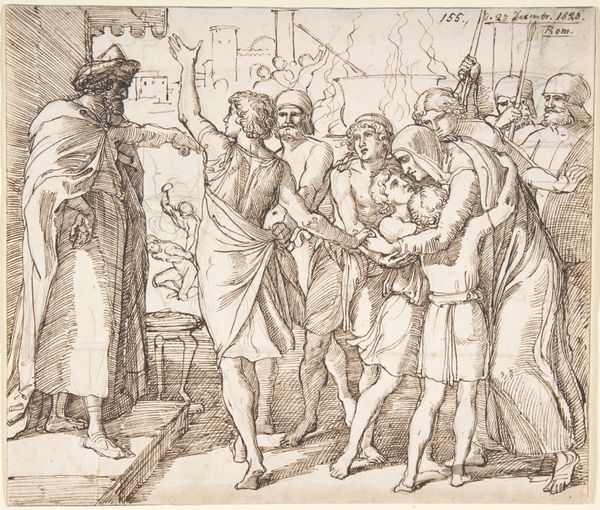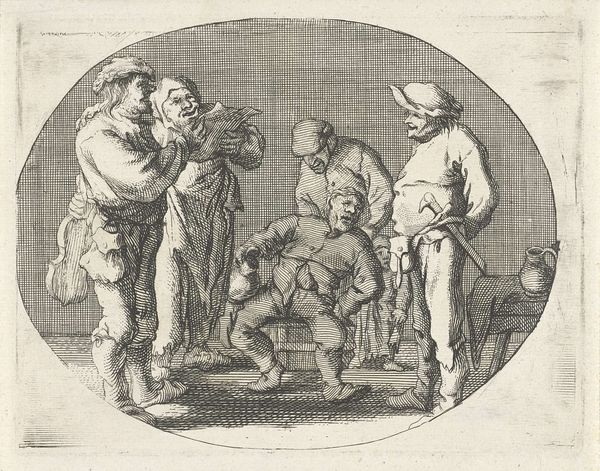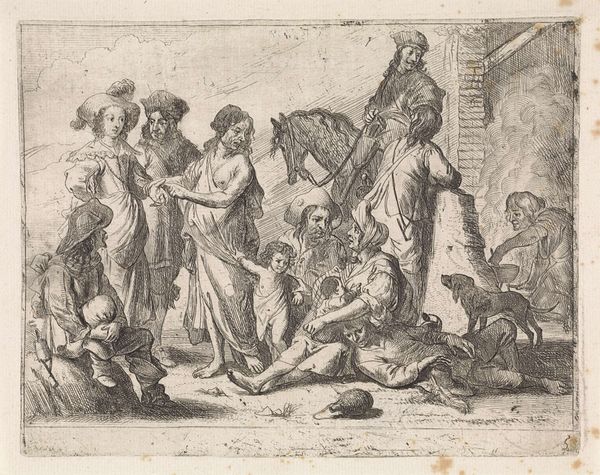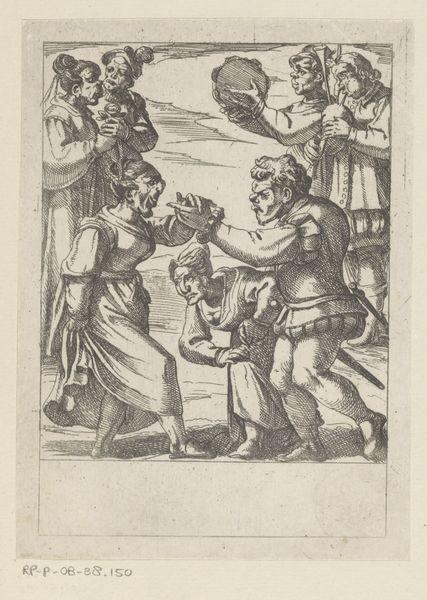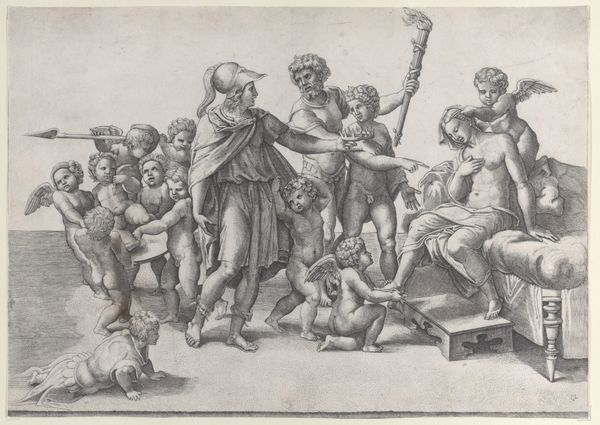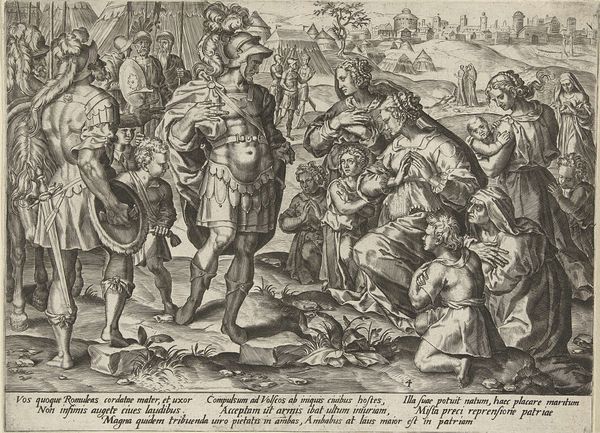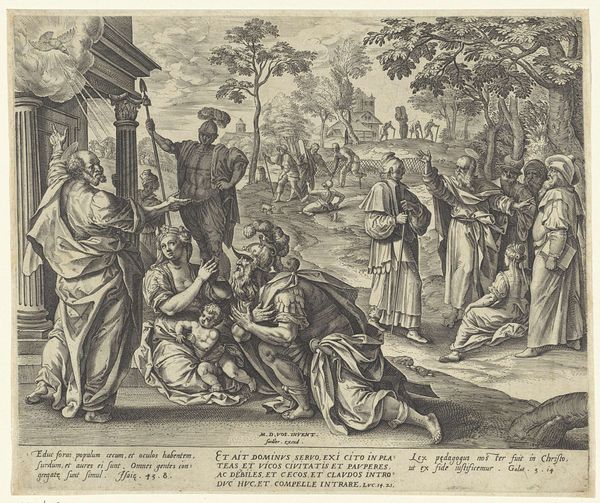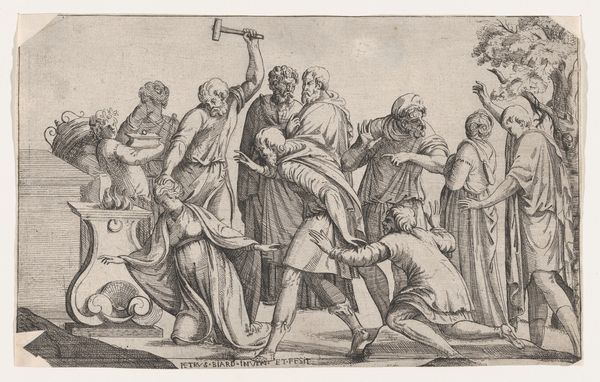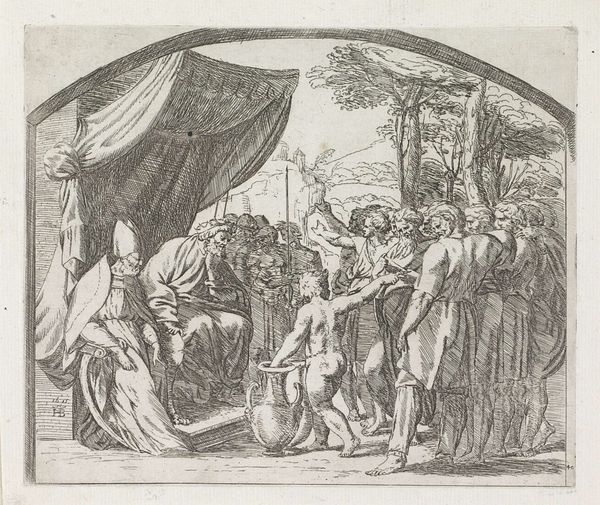
print, etching
#
ink drawing
#
narrative-art
#
baroque
# print
#
etching
#
figuration
#
genre-painting
Dimensions: height 112 mm, width 146 mm
Copyright: Rijks Museum: Open Domain
Editor: We’re looking at Cornelis de Wael's "De kwakzalver" or "The Quack," created sometime between 1630 and 1648. It's an etching, and the scene feels almost like a snapshot of everyday life, but with a somewhat satirical tone. There's a crowd gathered around, and someone seems to be receiving dubious medical attention. What strikes you most about this piece? Curator: Considering its materiality as an etching, observe how the printmaking process itself contributes to the artwork's message. The lines, etched laboriously into the plate, translate the social commentary onto the paper. The use of this reproductive medium suggests wider dissemination. The figure receiving 'medical attention,' surrounded by a crowd of consumers, invites us to examine the circulation and consumption of pseudo-science within the 17th-century. What can the clothing, materials, and props displayed say about wealth and class? Editor: It seems like there is some visual shorthand here: wealth on the part of the healer, who clearly benefits from exploiting those who are perhaps less materially secure, seeking cheap cures in a world without advanced modern medicine. Curator: Precisely. And consider the labor involved in creating this etching, and by extension the artist’s role as a producer. What does this print suggest about the material conditions that allowed for its production and consumption, both for De Wael and for his audience? Editor: I suppose it's a reflection on the burgeoning marketplace, even for something as fundamental as healthcare. The work emphasizes the socio-economic transactions at play. Thank you, it really puts the focus on what the piece communicates about work, social class and commerce. Curator: Exactly! It's not just a scene, but an artifact deeply embedded in the social and material realities of its time. Thinking through the material processes can reveal how art participated in shaping perceptions of labor, value, and belief.
Comments
No comments
Be the first to comment and join the conversation on the ultimate creative platform.
